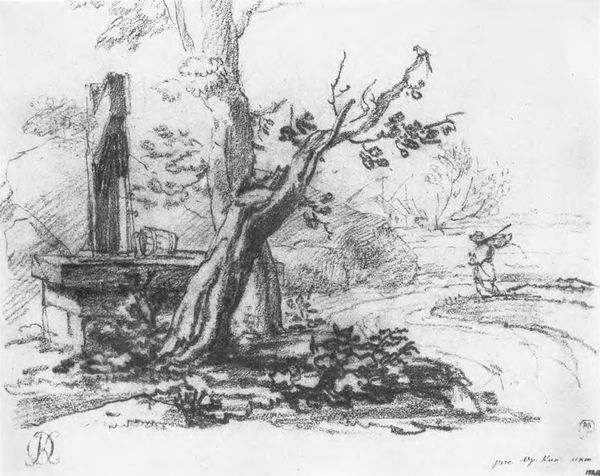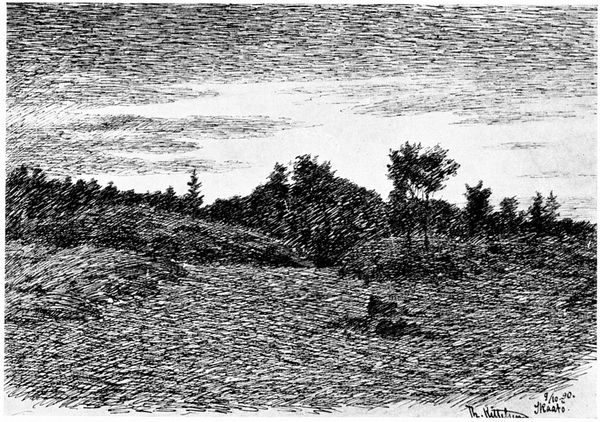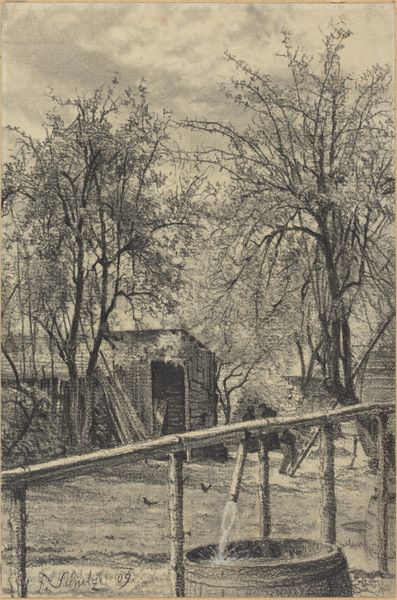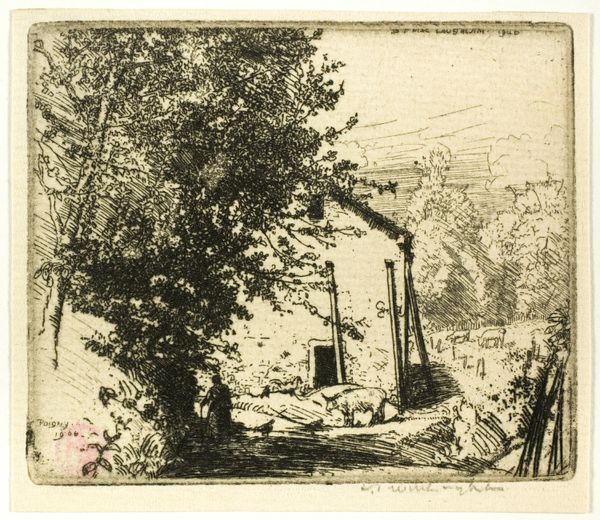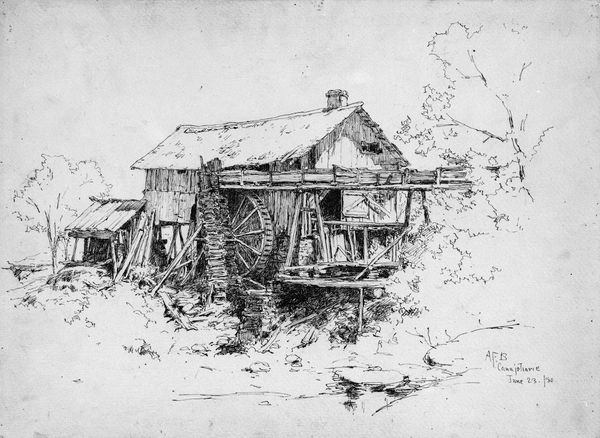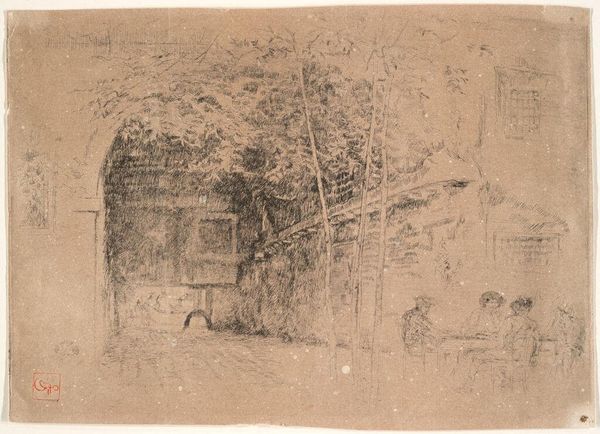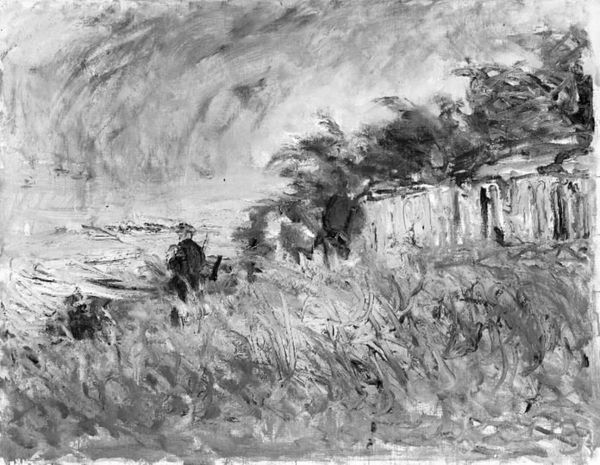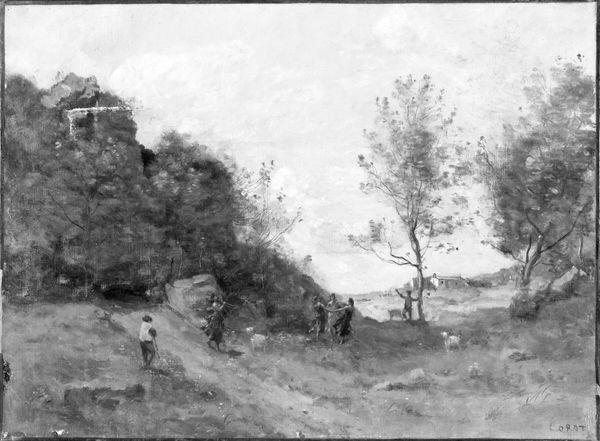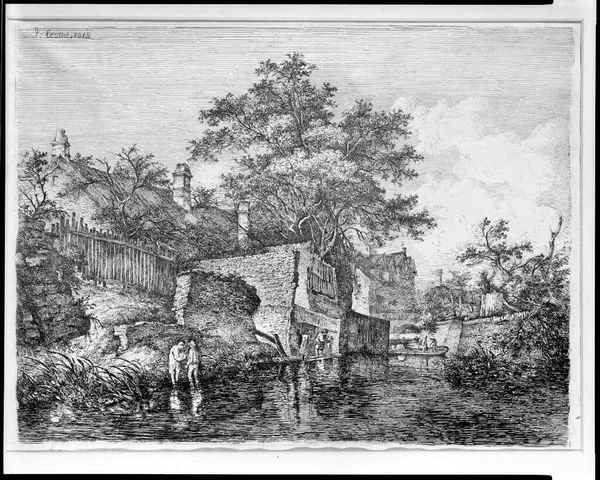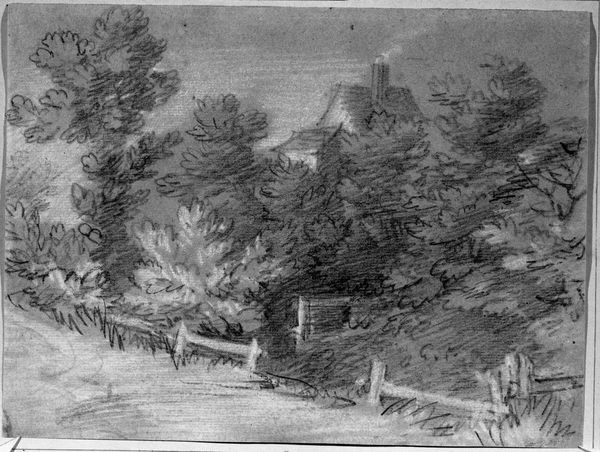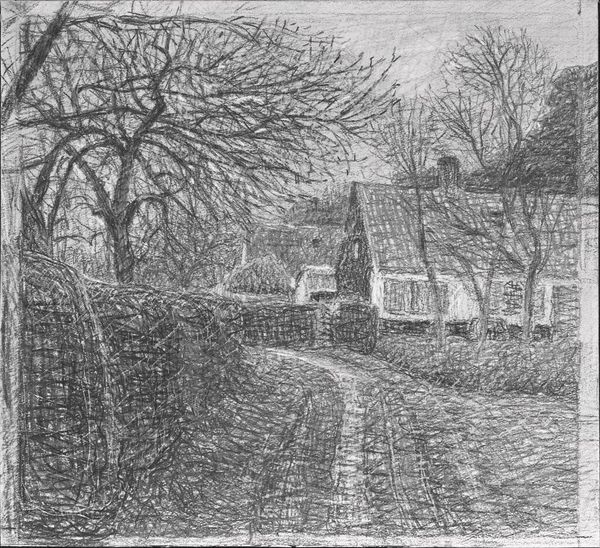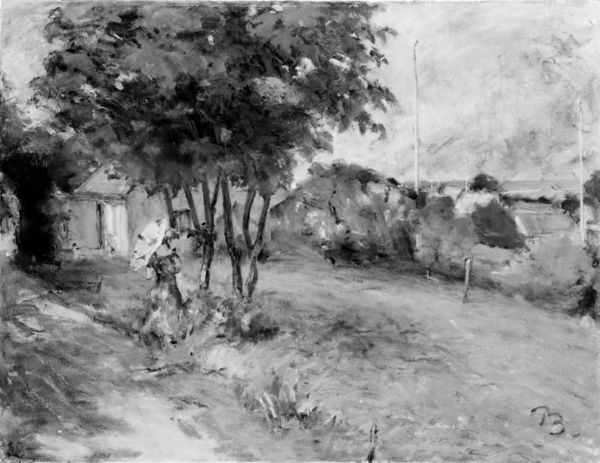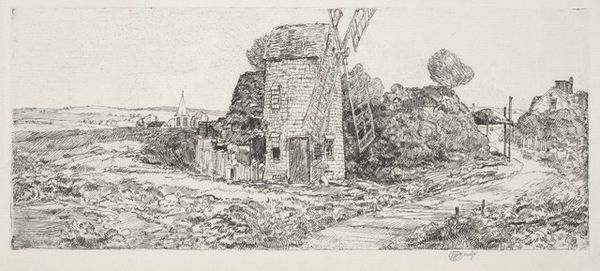
Dimensions: plate: 3 1/16 x 4 7/16 in. (7.8 x 11.4 cm) sheet: 6 3/4 x 8 7/8 in. (17.2 x 22.5 cm) frame: 14 1/4 x 16 1/4 in. (36.2 cm)
Copyright: Public Domain
Editor: Here we have Henri-Joseph Harpignies’ "Two Figures by a Small Watergate", which appears to have been made between 1830 and 1916. It looks like an etching printed with ink on paper, and strikes me as quite an intimate portrayal of leisure. What do you see in it? Curator: Well, beyond the immediately visible imagery, I see the work of the hand, quite literally. Consider the process of etching – the labor involved in meticulously carving into a plate, the controlled application of acid, the act of printing itself. How does the choice of etching as a medium impact the viewing experience and relate to the subject matter? Editor: That's interesting, I hadn’t considered the physical work itself. It definitely feels very immediate because you can really see all the small etched lines. Curator: Exactly. And who has access to these means of production? Etching was, historically, more accessible to artists than, say, oil painting which was far more dependent on extensive studio facilities and complicated and expensive chemical processes. This speaks volumes about artistic communities and potential democratization within the art world at the time. Editor: So the medium wasn't just a means to an end; it influenced the type of art being created and by whom. Curator: Precisely. This etching gives us access not only to a tranquil scene but also to questions of labor, skill, and economic forces in the art world itself. And if Harpignies produced it “en plein air”, how would his process shape and influence what the “figures” mean as a social representation? Editor: Thinking about the etching process really changed how I view this piece! I guess I had viewed it only as a quaint landscape! Curator: Yes, and by examining its material construction and its wider historical context we are invited to appreciate a wider dialogue about how landscape and social activity in Harpignies's vision are constructed, consumed, and assigned value.
Comments
No comments
Be the first to comment and join the conversation on the ultimate creative platform.
